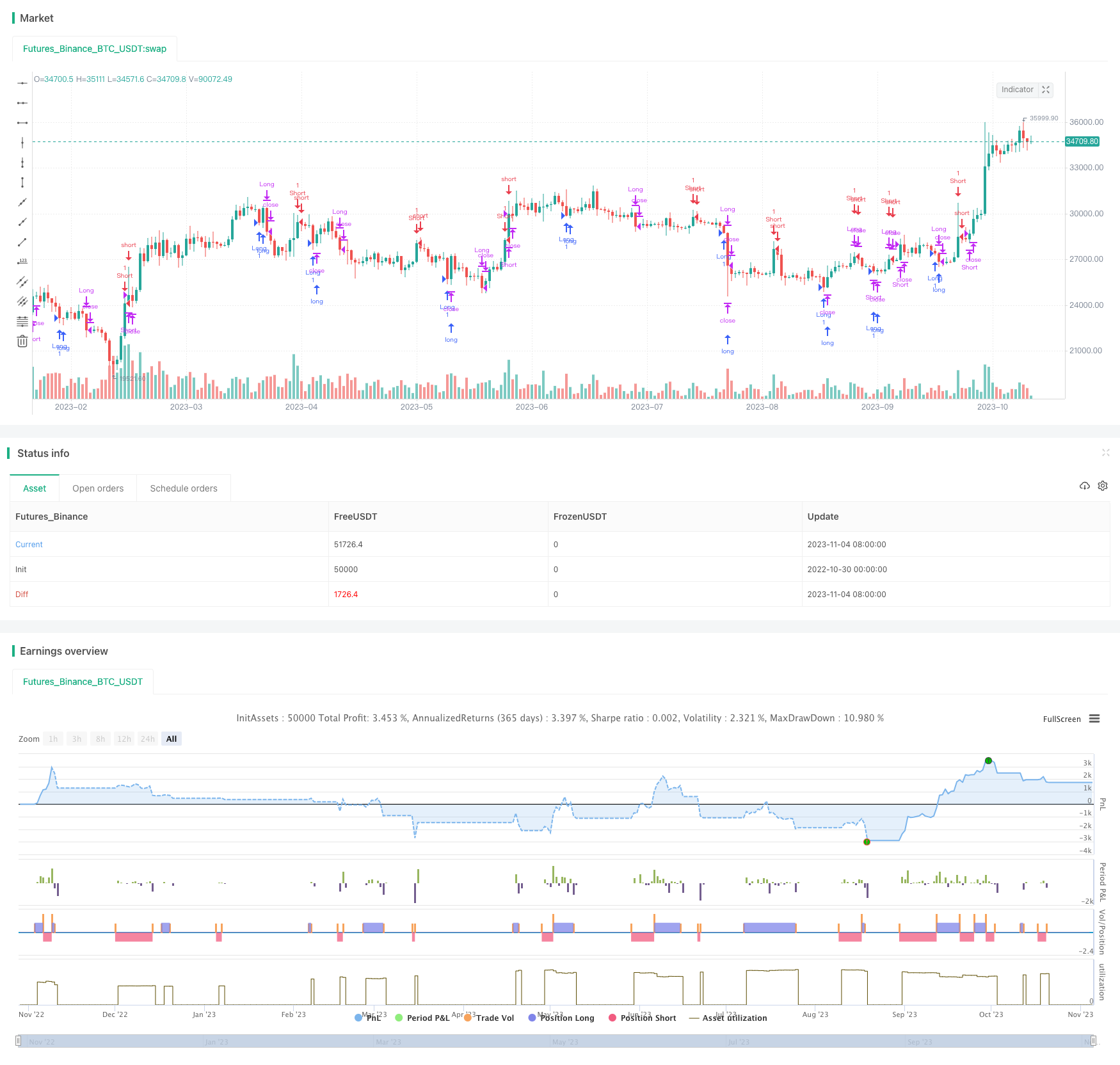
概述
RSI区间震荡交易策略通过在RSI达到超买超卖区间时进行反向交易,来获利于价格的震荡区间。该策略基于价格不会永远单向上涨或下跌的假设,通过捕捉RSI达到超买超卖时价格回调的机会来盈利。
策略原理
该策略通过计算RSI指标判断价格是否达到超买或超卖区间。具体来说,策略首先计算RSI指标的长度为2周期。然后设置RSI超买线为91,超卖线为11。当RSI上穿超卖区间时,做空;当RSI下穿超卖区间时,做多。每次交易的仓位根据最大仓位比例参数设定,当前固定为5%。
为控制风险,策略还设置了止损技巧。具体来说,当做多后,如果价格向下移动超过长入价的0.5%,则止损平仓;当做空后,如果价格向上移动超过0.5%,则止损平仓。这可以避免价格出现剧烈单边突破的情况下带来的损失。
综上,该策略核心逻辑为:监测RSI指标判断价格超买超卖情况,根据配置的RSI参数进行反向交易,同时设置止损来控制风险。
优势分析
利用RSI指标判断超买超卖,这是一种较为经典和可靠的交易信号。
反向交易超买超卖,符合价格不会永远单边上涨或下跌的假设,可以获利于价格区间震荡。
设置止损来控制单笔交易的损失。
策略回测框架简单清晰,容易理解和修改。
RSI参数和止损幅度可以灵活设置,适应市场的变化。
风险分析
RSI作为一种趋势指标,如果出现持续的价格趋势而不是震荡,该策略可能会产生连续的损失。
RSI参数设置不当,可能导致交易信号增多但胜率较低。
止损幅度设置不当,可能导致止损被价格小幅度触发,或单笔损失过大。
该策略更适合震荡反弹的市场环境,在显著趋势的市场中效果可能不佳。
仓位设置过大也会导致单笔损失扩大。
优化方向
可以考虑结合其他指标如MACD等与RSI形成组合信号,提高交易决策的准确性。
可以研究不同参数下RSI的统计特征,从中寻找最佳参数组合。
可以设置仓位比例动态调整机制,在回测中测试其效果。
可以考虑以ATR等指标计算止损幅度,使止损更具适应性。
可以结合机器学习等方法寻找最优的参数组合。
可以探索其他反转交易策略与RSI结合,形成更稳健的交易体系。
总结
RSI区间震荡交易策略通过简单的RSI指标判断价格超买超卖进行反向交易,并设置止损控制风险。该策略适合震荡反弹的市场环境,通过捕捉区间价格波动来获利。但RSI作为趋势指标也有其局限性,此策略可能不适合趋势明显的市场。通过参数优化、止损规则改进、与其他指标和策略组合等方式,可以提升该策略的稳定性和适应性。总体来说,RSI区间震荡交易策略具有一定参考价值,但实盘中需要审时度势地使用与优化。
/*backtest
start: 2022-10-30 00:00:00
end: 2023-11-05 00:00:00
period: 1d
basePeriod: 1h
exchanges: [{"eid":"Futures_Binance","currency":"BTC_USDT"}]
*/
//@version=5
strategy("Simple RSI Strategy", overlay=true)
var rsiLength = input(2, title = "rsi Length")
var float rsiBuyLevel = input(11, title = "What rsi level triggers a long")
var float rsiShortLevel = input(91, title = "What rsi level triggers a short")
var float maxRisk = input(.05, title="Maximum risk/ trade")
var chartEntryStop = input(.005, title="Max Movment in the opposite direction / trade")
var float longEntryPrice = na
var float shortEntryPrice = na
rsiValue = ta.rsi(close, rsiLength)
var float maxRiskValue = (strategy.equity * maxRisk) / chartEntryStop
var float maxRsi = 0
//Conditions
// Strategy Execution
if( close <= longEntryPrice-(longEntryPrice*chartEntryStop ))
strategy.close("Long")
if( close >= shortEntryPrice+(shortEntryPrice*chartEntryStop ))
strategy.close("Short")
if (rsiValue <= rsiBuyLevel and maxRsi == rsiShortLevel)
maxRsi := rsiBuyLevel
strategy.close("Short")
strategy.entry("Long", strategy.long)
longEntryPrice := close
else if (rsiValue >= rsiShortLevel and maxRsi == rsiBuyLevel)
maxRsi := rsiShortLevel
strategy.close("Long")
strategy.entry("Short", strategy.short)
shortEntryPrice := close
else if (rsiValue >= rsiShortLevel )
maxRsi := rsiShortLevel
strategy.close("Long")
else if (rsiValue <= rsiBuyLevel )
maxRsi := rsiBuyLevel
strategy.close("Short")